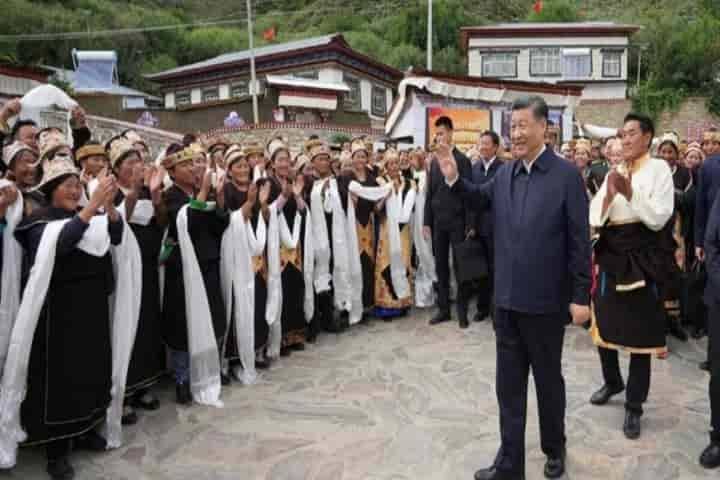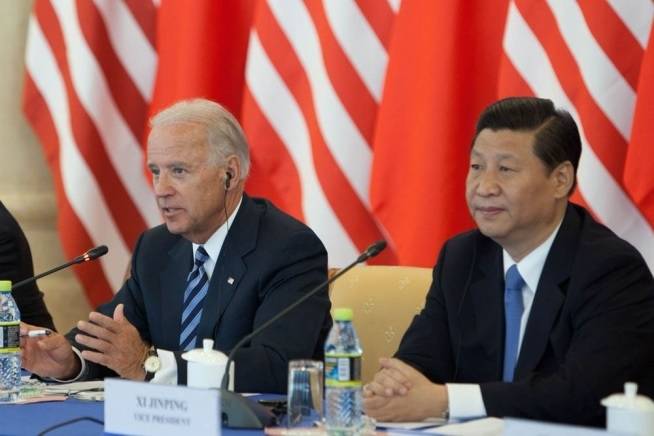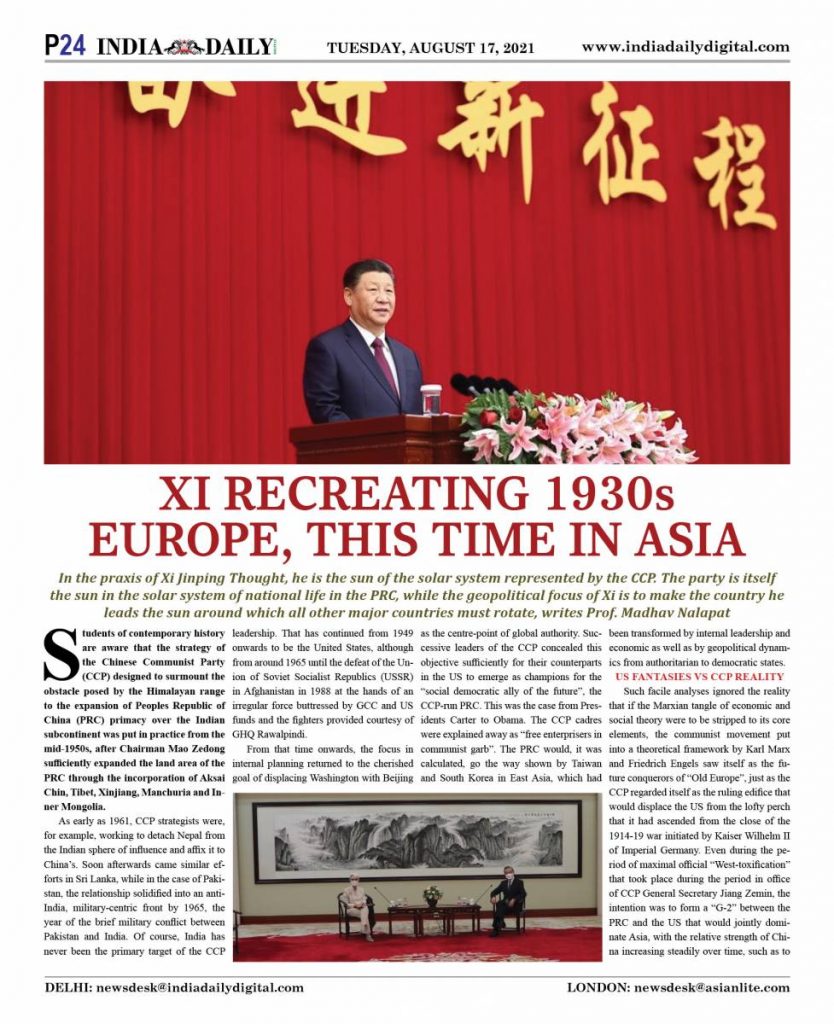
In the praxis of Xi Jinping Thought, he is the sun of the solar system represented by the CCP. The party is itself the sun in the solar system of national life in the PRC, while the geopolitical focus of Xi is to make the country he leads the sun around which all other major countries must rotate, writes Prof. Madhav Nalapat

Students of contemporary history are aware that the strategy of the Chinese Communist Party (CCP) designed to surmount the obstacle posed by the Himalayan range to the expansion of Peoples Republic of China (PRC) primacy over the Indian subcontinent was put in practice from the mid-1950s, after Chairman Mao Zedong sufficiently expanded the land area of the PRC through the incorporation of Aksai Chin, Tibet, Xinjiang, Manchuria and Inner Mongolia.
As early as 1961, CCP strategists were, for example, working to detach Nepal from the Indian sphere of influence and affix it to China’s. Soon afterwards came similar efforts in Sri Lanka, while in the case of Pakistan, the relationship solidified into an anti-India, military-centric front by 1965, the year of the brief military conflict between Pakistan and India. Of course, India has never been the primary target of the CCP leadership. That has continued from 1949 onwards to be the United States, although from around 1965 until the defeat of the Union of Soviet Socialist Republics (USSR) in Afghanistan in 1988 at the hands of an irregular force buttressed by GCC and US funds and the fighters provided courtesy of GHQ Rawalpindi.
From that time onwards, the focus in internal planning returned to the cherished goal of displacing Washington with Beijing as the centre-point of global authority. Successive leaders of the CCP concealed this objective sufficiently for their counterparts in the US to emerge as champions for the “social democratic ally of the future”, the CCP-run PRC. This was the case from Presidents Carter to Obama. The CCP cadres were explained away as “free enterprisers in communist garb”. The PRC would, it was calculated, go the way shown by Taiwan and South Korea in East Asia, which had been transformed by internal leadership and economic as well as by geopolitical dynamics from authoritarian to democratic states.

US FANTASIES VS CCP REALITY
Such facile analyses ignored the reality that if the Marxian tangle of economic and social theory were to be stripped to its core elements, the communist movement put into a theoretical framework by Karl Marx and Friedrich Engels saw itself as the future conquerors of “Old Europe”, just as the CCP regarded itself as the ruling edifice that would displace the US from the lofty perch that it had ascended from the close of the 1914-19 war initiated by Kaiser Wilhelm II of Imperial Germany. Even during the period of maximal official “West-toxification” that took place during the period in office of CCP General Secretary Jiang Zemin, the intention was to form a “G-2” between the PRC and the US that would jointly dominate Asia, with the relative strength of China increasing steadily over time, such as to secure primacy in Asia and work for a G-2 elsewhere, preparatory to securing dominance (over the US) in these continents as well.
ALSO READ: US backs Lithuania amid China threat over Taiwan issue
The Kissingers could dream of the PRC becoming another post-1945 Japan, that too without a war, simply through trade and what is known in CCP parlance as “friendly contact”. They were lubricated with the financial benefits that usually accompanied such fantasies, and which may explain the vehemence with which they pressed their claims over those who warned that in the PRC, the US was encountering an existential and systemic challenge far greater than any that had been posed by the USSR since the 1950s. Kissingerian goody-goody thought (on the policies and intended trajectory of the PRC) continued even into the Trump administration courtesy Senior White House Advisor Jared Kushner and Treasury Secretary Steven Mnuchin, although it was the 45th President of the US who accepted the reality of Cold War 2.0 (between the US and China) that his successor Joe Biden has carried forward in practice, even if not always verbally.
CCP DOCTRINE OF HAN EXCEPTIONALISM
This analyst has long termed the CCP as being based on Han exceptionalism, which is a more emphatic manner of describing the Han nationalism that has guided the policy of each of the successive leaders of the CCP, including the major troika of Mao, Deng and Xi. Certainly, from the 1940s, in the hilly fastnesses of Yanan, Chairman Mao internalised in his strategies the Middle Kingdom complex. This is that the world will never find its equilibrium until such time as Communist China establishes itself as the Middle Kingdom, which in the perception of the CCP leadership is the geopolitical pivot around which the rest of the world must revolve in order to ensure a “stable and secure world order”.

Such a Weltanschauung (world view) is the polar opposite of the “international rules and conventions” which the Atlantic Alliance has sought to universalise, not that this has been obvious to the chain of “experts on the PRC” who have ignored the fundamentally divergent—indeed, inevitably if eventually clashing—views and objectives of the PRC and the “international order” which the US and its Atlanticist allies seek to fashion and lead. While the Middle Kingdom fixation was a constant, the thinking and consequently the tactics adopted by the principal troika of the CCP pantheon, Mao, Deng and Xi, have been different.
After the (uncontested by India) takeover of Aksai Chin by 1955, Mao in effect ceased any further expansion of additional territory as the goal of the PRC. He had succeeded in more than doubling the territory administered from Beijing. His focus was on destroying the hierarchy of the CCP through the Cultural Revolution. By the time this ended shortly before his passing, Mao had created a vacuum almost entirely in the top and substantially in the middle rungs of the CCP governance mechanism that was filled later by Deng Xiaoping, once the “Permanent Revolutionaries” led by Mao’s widow Jiang Qing were eliminated soon after Chairman Mao died in 1976. But for the chaos in the leadership created by the Cultural Revolution and its attendant Red Guards responding to the Chairman’s call to them to “Bombard the Headquarters”, CCP Paramount Leader Deng would never have been able to get the CCP to consent to the measures he took from 1979 onwards to speed up the rate of economic growth in what was still an underdeveloped country.
While Mao doubled the land area of the PRC, Deng increased the Gross National Product of his country by over four times during his lifetime. He was followed by Jiang Zemin and Hu Jintao, who were content to follow the path left behind by the Paramount Leader, who to the close of his days refused to repudiate Mao (in the manner Khrushchev did Stalin in his soon not-very-secret speech in 1956), aware of the damage that the about turn on Stalin of the then CPSU General Secretary had led to a precipitous decline in the respect of most Soviet citizens for the party that had ruled them since 1917.

CONSEQUENCES OF XI JINPING THOUGHT
Although Mao came across as despotic in several (mostly external) portrayals of his rule and manner of functioning, the reality was that he was a decentraliser. The Chairman spent much of his day in books and conversation, leaving the details of administration to those he regarded as loyal to Mao Zedong Thought. Such administrative decentralisation was carried forward into the economic sphere by Deng, who gave wide latitude to both enterprises as well as those in different layers of the government in what became a competition to generate growth through investment and expenditure. Following in the path adopted by Mao, of not going in for any additional territorial expansion during his time, Deng downsized the Peoples Liberation Army in both manpower as well as influence within the CCP.
s in the Mao period, “the Party controlled the Gun” in Deng’s China. After Jiang and Hu, the baton of CCP General Secretary passed to Xi Jinping, who assumed charge in 2012. Mao trashed the teachings of Confucius and its rigid insistence on hierarchy, smashing hierarchies within the CCP. In contrast, Xi reinstated Confucius as well as the importance of hierarchy. If the governance mechanism under CCP General Secretary Xi Jinping can be described as a solar system, it would have him as the sun, giving life through the “sunshine” of support and approval to the subordinates in his orbit, who in turn pass on that power to those below them, and so onwards. In the praxis of Xi Jinping Thought, Xi is the sun of the solar system represented by the CCP.
ALSO READ: China’s nuclear arsenal becoming difficult to hide, says US govt
The party is itself the sun in the solar system of national life in the PRC, while the geopolitical focus of Xi is to make the country he leads the sun around which all other major countries will rotate, bathing in the sunlight that is beamed onto them, with each having secondary countries or “moons” that in turn revolve around them. This is a world view completely at variance with not just the US and its Atlanticist allies, but India, Japan and numerous other countries as well. The New International Order (NIO) created by the PRC will have itself as the centre-point, with the consequence that only such powers as are obedient to Beijing’s will (such as army-ruled Pakistan or Laos) are considered worthy citizens of the NIO. As in the period of CPSU General Secretary J.V. Stalin (except during 1943-45, as a consequence of wartime exigencies), in Xi’s PRC, the Office of the General Secretary is the fulcrum of all authority in the country.

The decentralisation of much of effective authority during the Mao-Deng period has been replaced under CCP General Secretary Xi Jinping by a re-centralisation of authority in the Office of the General Secretary. The economic decentralisation that was the brainchild of Deng Xiaoping has been abandoned in favour of the establishing of control over private industry in the manner that was witnessed in India during the period in office of Prime Ministers Jawaharlal Nehru and Indira Gandhi. The focus on tech initiated by Hu Jintao in his second 5-year term as CCP General Secretary has been replaced by a renewed focus on manufacturing in the manner of Stalin and Mao.
THE AUTO-PILOT WAR
There is a method in moves such as Xi Jinping’s (a) placing the PLA rather than MoFA (Ministry of Foreign Affairs) as the spear of international messaging; (b) forcing—at a huge eventual cost in external market share and access to technology—tech platforms to work out ways designed to generate and to hand over meta data about populations in target countries that would assist the PLA in neutralising resistance to its forays into such locations; (c) eliminating those within the governance system who are likely to question the direction in which General Secretary Xi is taking the CCP and the PRC; and (d) once again, giving pride of place to manufacturing and to the production and securing of industrial raw materials and food items.
Such measures are logical in a context in which Xi is anticipating a kinetic and large-scale (although non-nuclear) war. This could break out over the Taiwan Straits, the Himalayan massif or the South China Sea, most likely, and during the coming few years. It had been calculated by the China analysts advising Prime Minister Nehru during 1959-62 that the economic difficulties being faced by the PRC would ensure that an attack by the PLA was not launched. As it turned out, the worsening economic situation in China helped convince the CCP Chairman to go in for a military conflict with India that would divert the attention of the populace from the travail they were undergoing. In much the same way, should Xi Jinping Thought, as put in practice in the PRC and around the world, lead to an economic constriction in China, that would necessitate the causation of a kinetic conflict that (should it end in victory) would ensure that economic difficulties do not lead to a withdrawal of the Mandate of Heaven (the acquiescence of the people) from the CCP led by Xi Jinping.
None in the PLA has ever actually fought a war. The combat training has been on computer screens and on the parade and field exercises ground. The war will be fought by the PLA on the basis of assumptions generated by the Artificial Intelligence systems utilised in their planning by PLA tactical staff. In a sense, it would be a war fought on auto-pilot. As was shown in Galwan, such intricate calculations in a data and assumption laden mode of warfare may end not in a triumph but in a setback that could cost the CCP leadership at the least to lose the Mandate of Heaven. As a consequence of the consequences that have begun to flow from Xi Jinping Thought, the clouds of war are gathering in Asia in a manner that it would be remiss to take it lightly.
ALSO READ: China ready for ‘friendly relations’ with Taliban
ALSO READ: After Afghanistan takeover, Taliban release anti-Pak militants


